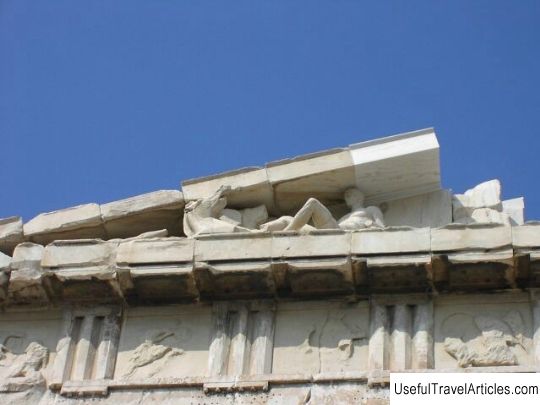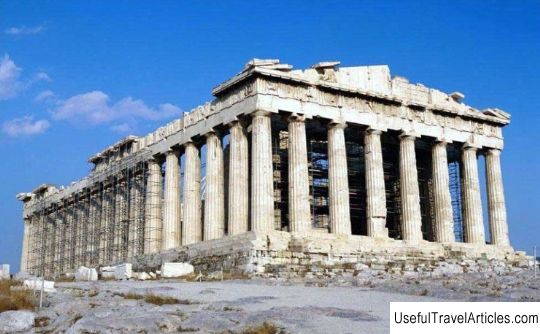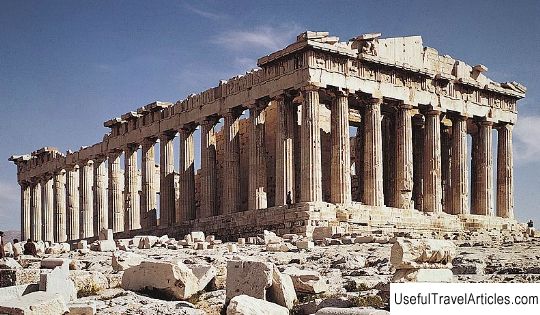According to Greek Reporter, climate change is negatively affecting ancient Greek cultural heritage and monuments around the world.

Phenomena such as wildfires, coastal erosion, floods and changes in rainfall patterns are increasing. Climate change is impacting temperature and humidity changes on construction materials at cultural heritage sites. Therefore, preserving and managing most monuments is a necessary task in the future.

The Parthenon is one of the first world recognized heritage sites. Photo: Thermos/Wikimedia Commons/CC BY 2.5
According to the Greek Ministry of Culture, the immediate, widespread and systemic risk from the impacts of climate change is affecting the country’s ancient cultural relics.
The Greek Ministry of Culture also admitted that “existing climate risks affecting wider areas of archaeological sites/monuments” are due to extreme weather events such as floods. Floods, fires, rising water levels and erosion are increasing.
Specifically in 2021, the archaeological site of Olympia, home of the ancient Olympic Games, is threatened by a forest fire. Or in 2020, the Lion’s Gate, the iconic stone archway that served as the main entrance to the ancient city of Mycenae in the Peloponnese, was charred black.

Extreme weather events in recent years, as well as air pollution and acid rain, have caused structural problems on the walls and temples of the Acropolis – one of the archaeological sites. The best preserved antiquity in Greece.
Efforts to preserve and protect the Acropolis and its monuments have been underway for decades. This process has also accelerated since the mid-1970s. However, Greece still has a large number of other archaeological sites that are completely exposed to the natural elements.
Such as the archaeological site on the island of Delos. Alexandre Farnoux, Director of the French School of Athens, recently pointed out that damage from sea, wind and rain has increased markedly over the past ten years.
According to Reuters, Mr. Farnous confirmed that there had been “serious damage to the walls, especially sensitive walls made of limestone, including the disappearance of joints and intrusion.” of water into the foundations of buildings”.

According to Mr. Farnous, the rains in recent years have raised groundwater levels and sea levels, causing water intrusion to destroy archaeological sites.
Greek efforts
Greece, a destination rich in tangible and intangible cultural heritage, is at the forefront of international efforts to address this issue.

The Lion Gate in Mycenae was blackened by a forest fire in 2020. Source: AMNA
The Greek Ministry of Culture has established an interdisciplinary committee of experts responsible for developing a national action plan to address the impact of climate change on archaeological sites and historical monuments. country.
However, the preservation of cultural relics cannot be resolved by a single country. A coordinated approach across many countries is needed.
Alexis Georgoulis, representing Members of the European Parliament (MEPs) has been at the forefront of efforts to develop a common EU approach.
“Very few national climate change programs across Europe include targeted measures at heritage sites and this makes these destinations more vulnerable, especially in the Mediterranean”, Mr. Georgoulis emphasized.
Mr. Alexis Georgoulis requested the establishment of a special fund to finance projects aimed at protecting cultural heritage on the Mediterranean coast at risk of flooding and erosion due to climate change. He also asked Brussels to establish a team of professional scientists to collect data and develop solutions.
“The recent report of the Intergovernmental Panel on Climate Change (IPCC) described the Mediterranean as a climate risk hotspot, one of the most vulnerable regions in the world, which must face increasing risks due to climate change”, Mr. Georgoulis emphasized.

He noted that recently, the University of Kiel carried out a survey related to UNESCO World Heritage Sites in the lower Mediterranean coastal areas. In the coming years, these locations will be increasingly threatened by coastal erosion due to rising sea levels.
“Many UNESCO World Heritage Sites as well as European Cultural Heritage have played an important historical and cultural role in our common past. So this will be our future We and the EU need to act together to protect cultural heritage”, Mr. Georgoulis added.





